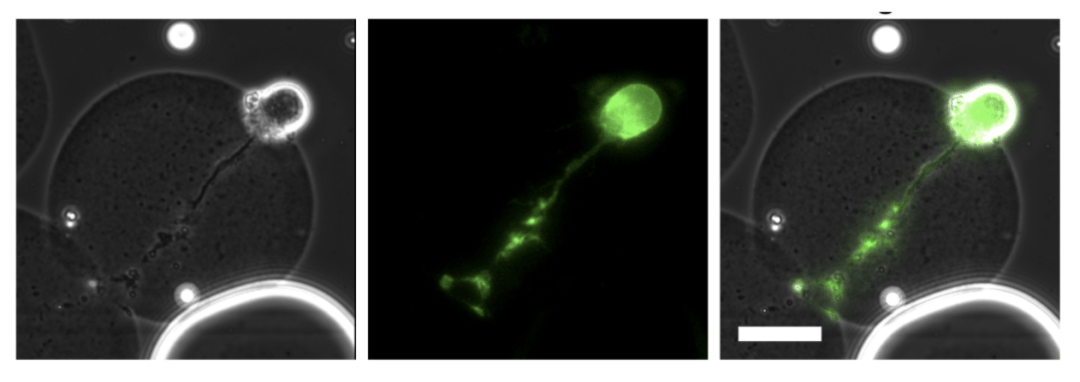Montana State receives $1 million grant to test snowpack measurement methods
 Montana State University assistant professor Eric Sproles, left, and graduate student Briana Whitehead, are pictured Wednesday, March 20, 2024, in Bozeman, Montana. They have begun testing new methods of measuring snowpack levels with a grant from the Bureau of Reclamation. MSU photo by Colter Peterson
Montana State University assistant professor Eric Sproles, left, and graduate student Briana Whitehead, are pictured Wednesday, March 20, 2024, in Bozeman, Montana. They have begun testing new methods of measuring snowpack levels with a grant from the Bureau of Reclamation. MSU photo by Colter Peterson
BOZEMAN – With a nearly $1 million grant from the federal Bureau of Reclamation, snow and water scientists at Montana State University have begun testing new methods of measuring snowpack levels with the goal of improving water forecasting for drought, flood and irrigation management in the U.S.
Eric Sproles, assistant professor in MSU’s Department of Earth Sciences in the College of Letters and Science, said the MSU-led project is one of 15 similar proposals funded by the bureau’s Snow Water Supply Forecasting Program to evaluate advanced snow-monitoring technologies for water supply forecasting and it’s the only one with fieldwork based in Montana’s Upper Missouri Headwaters basin, from which water for irrigation and other uses flows downstream to significantly populated areas.
That work will be conducted over three years by Sproles and Briana Whitehead, an earth sciences doctoral student who holds a master’s degree from MSU’s Department of Land Resources and Environmental Sciences. Scientists at Syracuse University and the University of Texas, who are partners on the grant, will assist with collecting and analyzing the data.
“We’re testing a lot of new approaches to measure snowpack to see if and how much we improve streamflow predictions,” Sproles said. “We’re looking at new ways to better measure snowpack across the western U.S.”
For decades, he explained, snowpack has been measured by antifreeze-filled bladders known as “snow pillows,” which are placed on the ground at elevations where the average annual snowpack accumulates. The pressure of the snow on the pillows is recorded and transmitted via telemetry to the Natural Resources Conservation Service of the U.S. Department of Agriculture, which operates the SNOTEL monitoring and reporting system. While snow pillows continue to operate and provide meaningful water resource data, this project looks to identify and test newer technologies to augment the existing SNOTEL network, Sproles said.
MSU’s project will evaluate emerging sensor technologies that measure snow water using gamma and cosmic rays, which are naturally occurring energy sources that become muffled or attenuated by snowpack. The sensors will measure the degree of attenuation, and scientists will run a series of calculations on those data to determine snow water measurements.
The testing is taking place at the Tenderfoot Creek Experimental Forest in central Montana, where stream gauges are already in place to measure snowmelt runoff. The team recently placed a permanently mounted cosmic ray sensor in the forest, which will continuously transmit real-time data.
“And while the snow pillow measures only several square feet, the cosmic ray sensor will measure approximately 22 acres – it will give us a much better representation at hourly intervals,” Sproles said.
By contrast, tests also will be performed with a drone-mounted gamma ray sensor capable of measuring hundreds of acres at a time, but only while the drone is in the air.
The team will test another drone-borne sensor with light detection and ranging, or lidar, technology. Sproles explained it will measure snow depths at a very high resolution – every 4 square inches – and be able to differentiate snow depth in proximity to various landscape features like trees and meadows.
“We will compare the snow-pillow method with these new approaches to see if and how much we improve streamflow predictions,” Sproles said. “We’ll see which is better, and how much water is coming out at the end.”
He noted that average snowpack elevations are rising under current climate trends, and that some of the technologies being tested by the MSU team will be able to access those higher elevations more easily than is possible with current methods.
A Bureau of Reclamation fact sheet on the Snow Water Supply Forecasting Program states that the agency seeks to develop a portfolio of complementary technologies to enhance snow monitoring and water supply forecasts.
“We’re trying to improve SNOTEL, not replace it,” explained Whitehead, who has worked for USDA/NRCS as a geographic information specialist and soil conservationist in the Bozeman region since 2019 and plans to conduct her doctoral research on the project.
She said her longtime interest in water resources was strengthened when she served with the Peace Corps in Ghana from 2014 to 2016.
“I saw first-hand how water resources can impact subsistence farming, soil health and agroforestry,” she said.
In the Upper Missouri Headwaters, Sproles added, it’s equally important that people recognize the importance of snow.
“Snow is a resource – snow is water,” he said. “What’s really important about these projects is we’re hoping to advise and better inform water resource management.”






 A neuron grown in a micro gel infected with HSV-1 that expresses a yellow fluorescent protein. Image courtesy of Matthew Taylor.
A neuron grown in a micro gel infected with HSV-1 that expresses a yellow fluorescent protein. Image courtesy of Matthew Taylor.
News Comments
Thank you
Open Auditions for Annie
Monday, Sep. 16, 2024
I’m at the Bozeman airport where your painting, “Blowing East” is displayed. It’s absolutely gorgeous! Bravo, Marci!!
The Artists’ Gallery in Bozeman’s Emerson Cultural Center May Exhibits
Sunday, Jun. 30, 2024
This is so typical of a sign in, which we should not have to do to check if we or some one in our party got a permit. I have been working or "creating an account" for 30 minutes and just get the same ...
Smith River permit drawing results available
Sunday, Mar. 10, 2024
I have struggled with this podcast and my own participation therein, the event itself obviously traumatic, but beyond that my inability to reach anyone and convey anything resembling truth. The person ...
Billings, MT Case Becomes True Crime Podcast | 'An Absurd Result'
Marktokarski
Saturday, Jan. 20, 2024